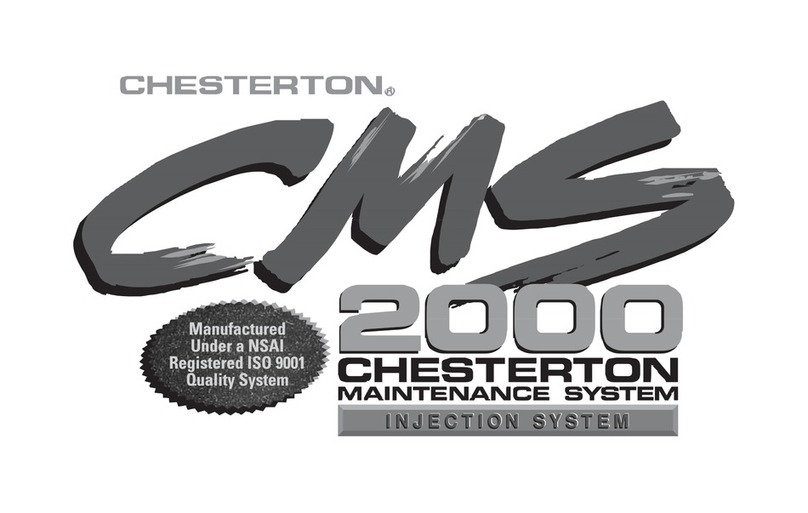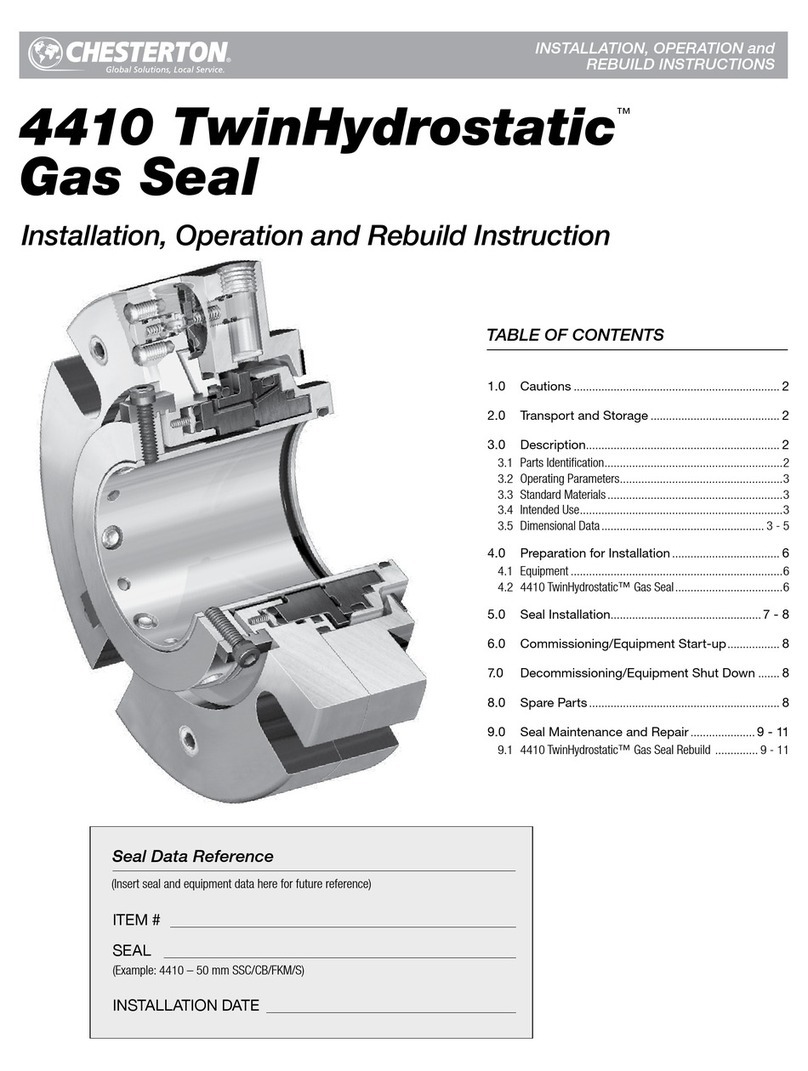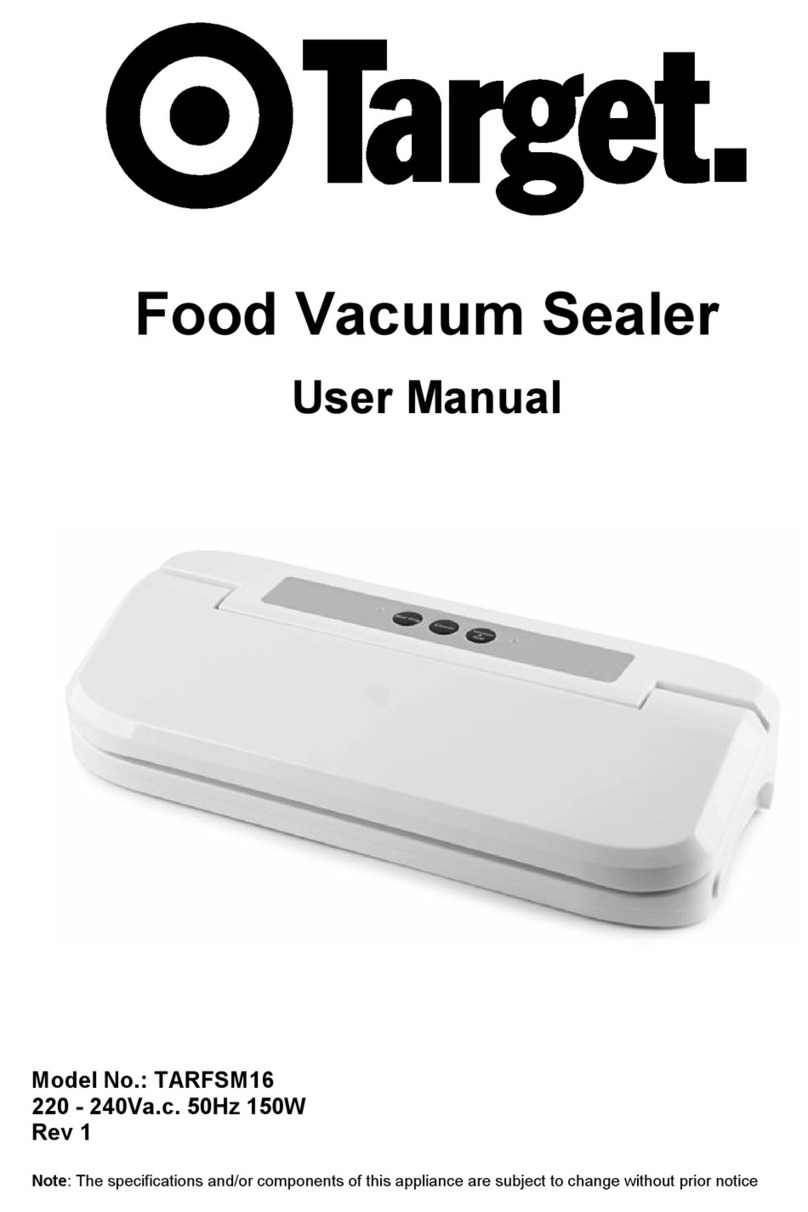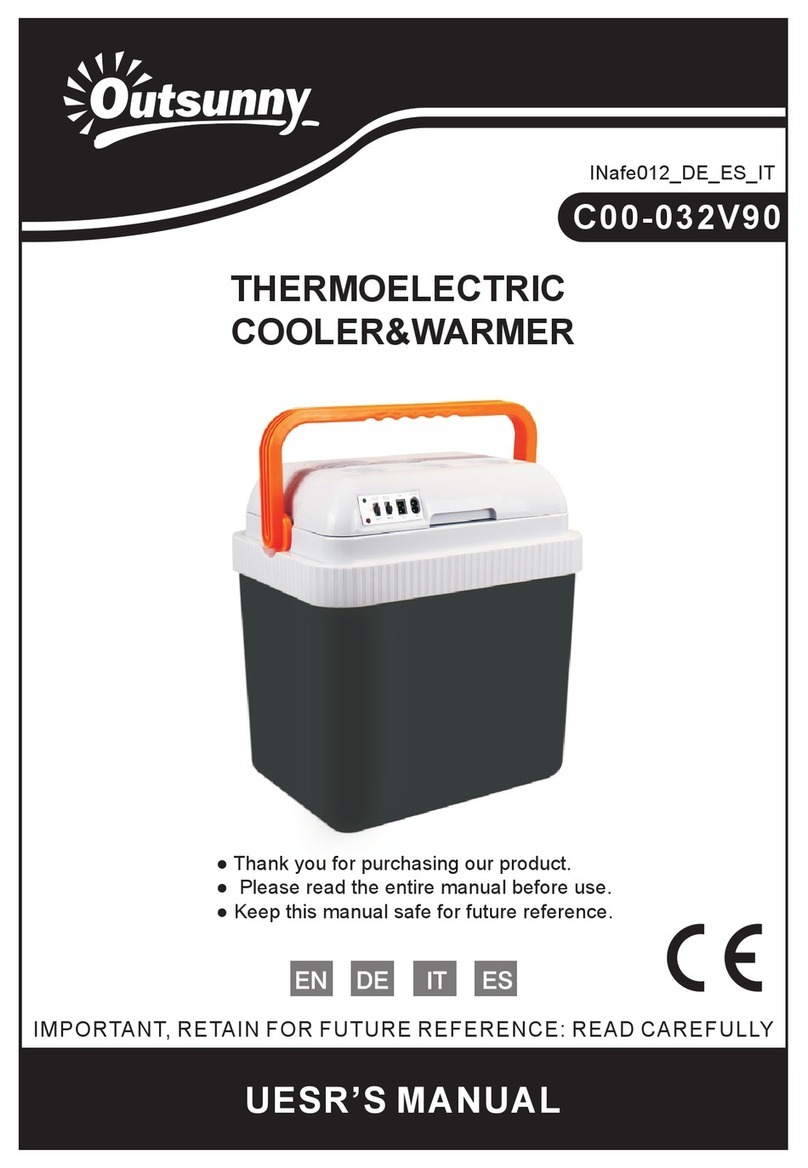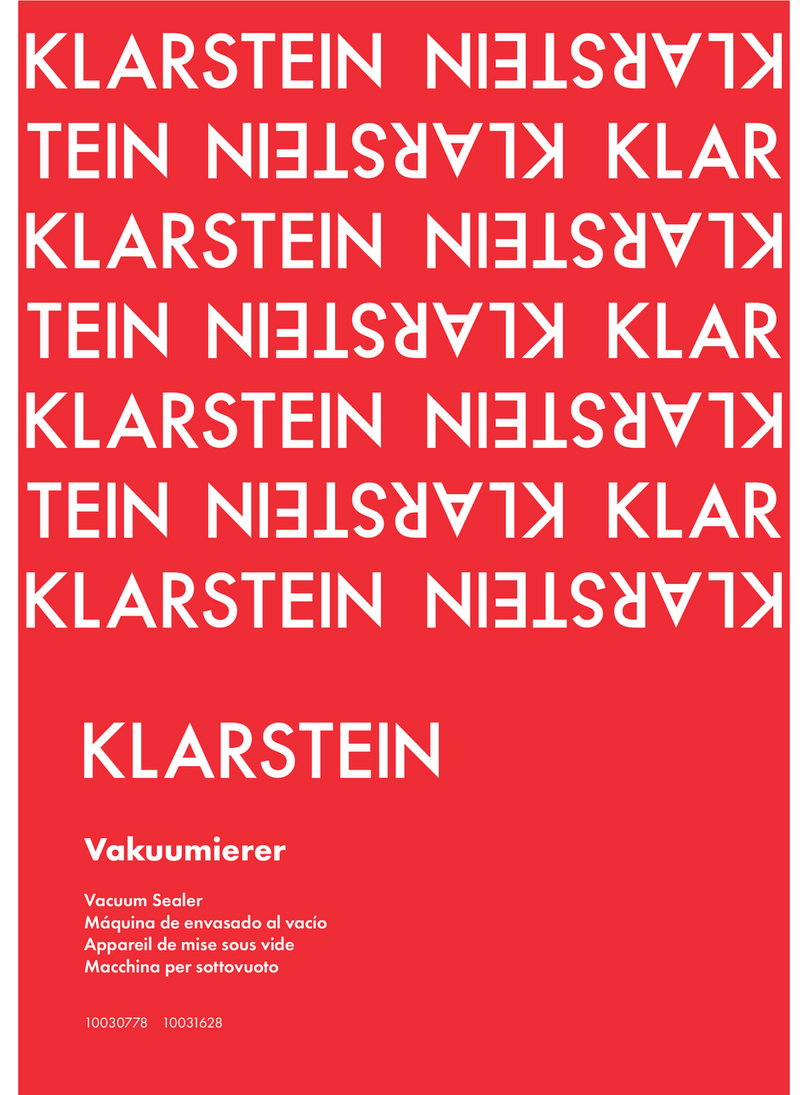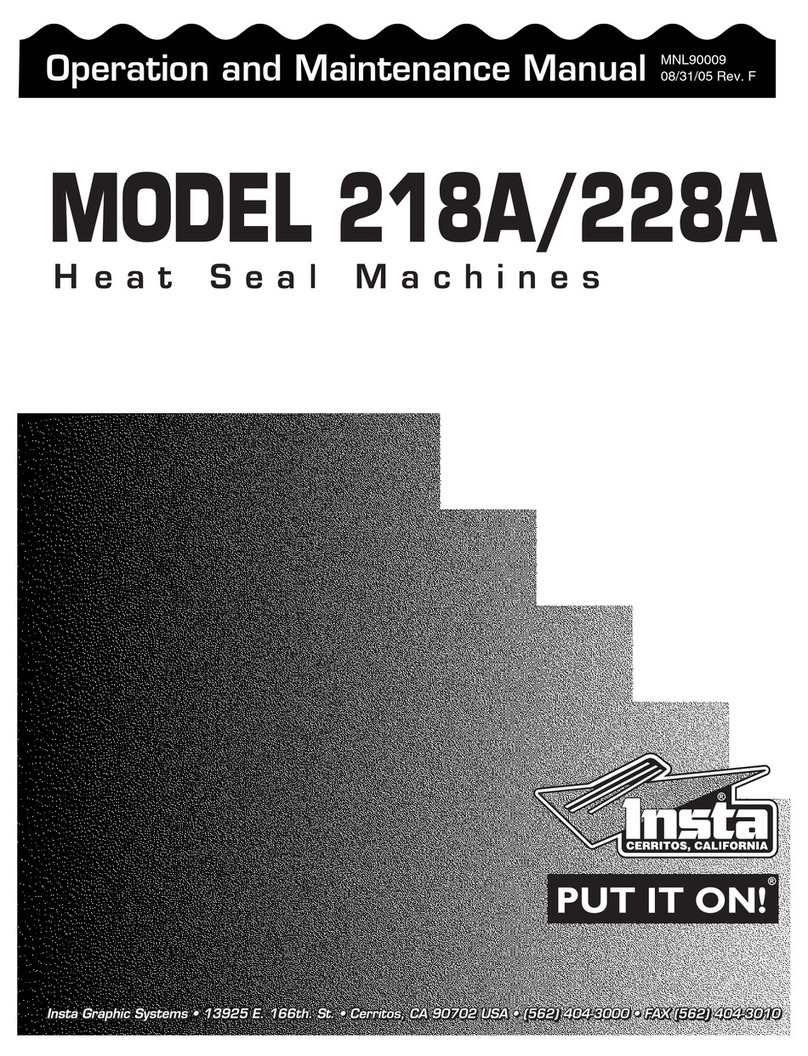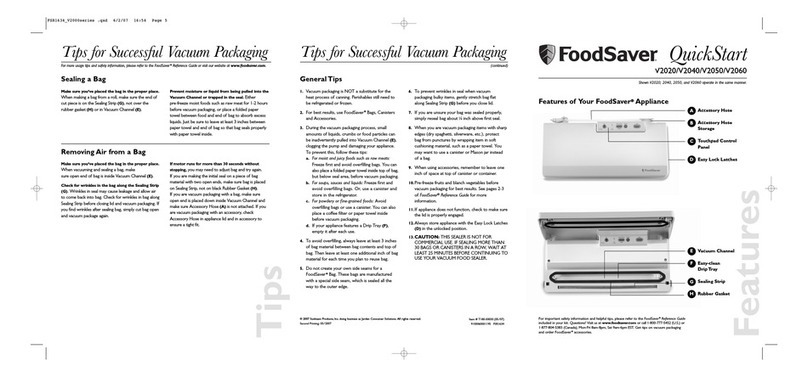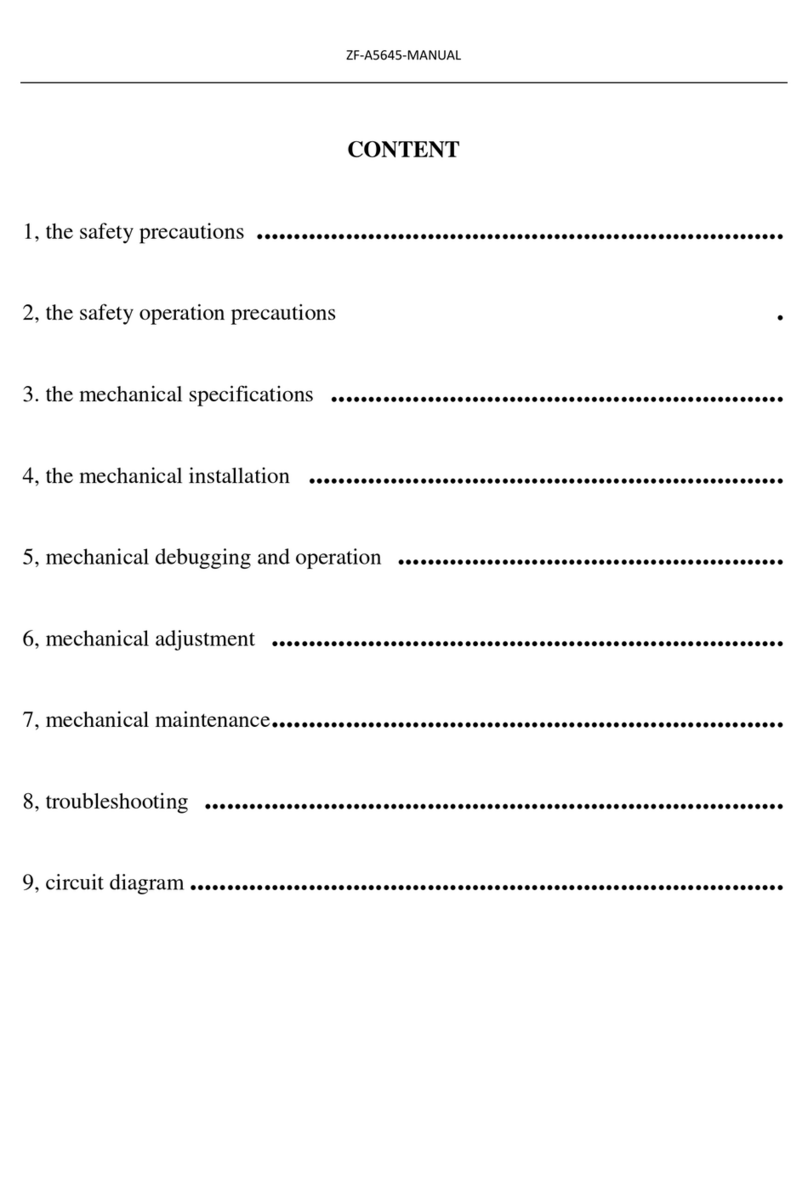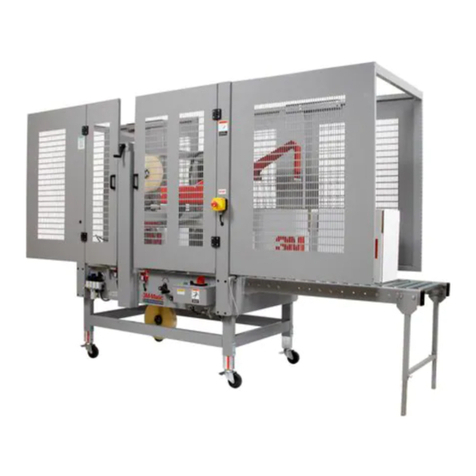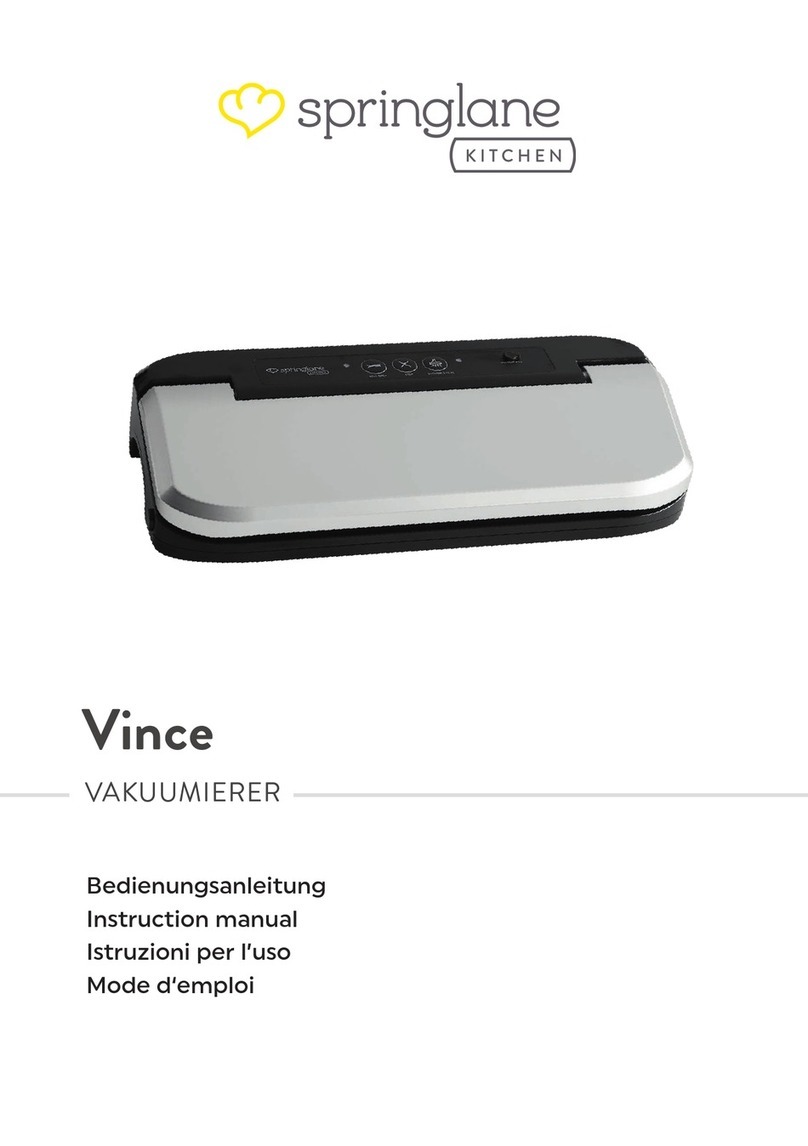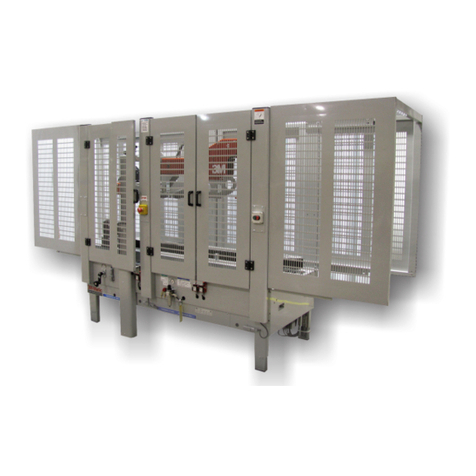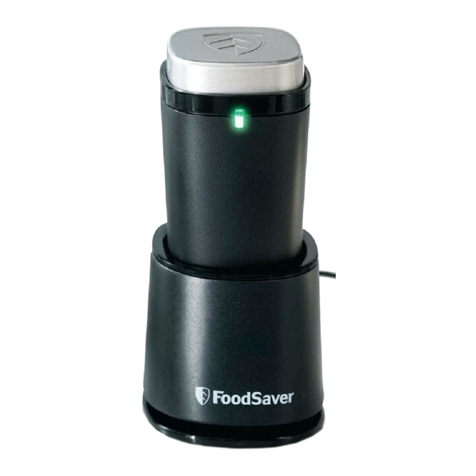Chesterton TwinHybrid 4400H Owner's manual

4400H TwinHybrid™
Gas Seal
Installation, Operation and Rebuild Instructions
TABLE OF CONTENTS
INSTALLATION, OPERATION and
REBUILD INSTRUCTIONS
Seal Data Reference
(Insert seal and equipment data here for future reference)
ITEM #
SEAL
(Example: 4400H – 50 mm SSC/CB/FKM/S)
INSTALLATION DATE
1.0 Cautions ................................................................... 2
2.0 Transport and Storage .......................................... 2
3.0 Description............................................................... 2
3.1 Parts Identification..........................................................2
3.2 Operating Parameters.....................................................3
3.3 Standard Materials .........................................................3
3.4 Intended Use..................................................................3
3.5 Dimensional Data ..................................................... 4 - 5
4.0 Preparation for Installation ................................... 6
4.1 Equipment .....................................................................6
4.2 4400H TwinHybrid™ Gas Seal........................................6
5.0 Seal Installation....................................................... 7
6.0 Commissioning/Equipment Start-up................. 8
7.0 Decommissioning/Equipment Shut Down ....... 8
8.0 Spare Parts .............................................................. 8
9.0 Seal Maintenance and Repair ..................... 8 - 11
9.1 4400H Trouble Shooting .................................................8
9.2 4400H TwinHybrid™ Gas Seal Rebuild Instructions.. 9 - 11

2
KEY
1 – Sleeve Assembly
2 – Shaft O-Ring
3 – Gasket
4 – Rotary O-Ring
5 – Rotary Seal Ring
6 – Adapter
7 – Rotary Cushion O-Ring
8 – Stationary Seal Ring
9 – Gland
10 – Inter Gland O-Ring
11 – OD Stationary O-Ring
12 – ID Stationary O-Ring
13 – Pusher Plate
14 – Lock Ring
15 – Centering Clip
16 – Socket Head Cap Screw
17 – Adjusting Screw
18 – Screw O-Ring
19 – Inboard Spring
20 – Diaphragm
21 – Actuator
22 – Snap Ring
23 – Seat O-Ring
24 – Seat
25 – Ball
26 – Outboard Spring
27 – Dog Point Set Screw
28 – Cup Point Set Screw
29 – Gland Screws
30 – Spring
31 – 1/4" Pipe Plug
32 – 1/8" Pipe Plug
33 – 3/8" Pipe Plug
34 – Cap Plug
35 – Filter Disk
36 – Retaining Clip
37 – Support Gasket
These instructions are general in nature. It is assumed
that the installer is familiar with seals and certainly with
the requirements of their plant for the successful use of
mechanical seals. If in doubt, get assistance from someone
in the plant who is familiar with seals or delay the installation
until a seal representative is available. All necessary auxiliary
arrangements for successful operation (heating, cooling,
flushing) as well as safety devices must be employed. These
decisions are to be made by the user. The decision to use this
seal or any other Chesterton seal in a particular service is the
customer’s responsibility.
Transport and store seals in their original packaging.
Mechanical seals contain components that may be subject to
alteration and ageing. It is therefore important to observe the
following conditions for storage:
Do not touch the mechanical seal for any reason while it is
operating. Lockout or uncouple the driver prior to personal
contact with the seal. Do not touch the mechanical seal
while it is in contact with hot or cold fluids. Ensure that all
the mechanical seal materials are compatible with the
process fluid. This will prevent possible personal injury.
• Dust free environment
• Moderately ventilated at room temperature
• Avoid exposure to direct sunlight and heat.
• For elastomers, storage conditions according to ISO 2230
should be observed.
1.0 CAUTIONS
2.0 TRANSPORT AND STORAGE
3.0 DESCRIPTION
3.1 Parts Identification
Figure 1
20
19
18
35
17
36
22
23
21
24
25
26
29
16
15
9
10
14
27
30
11
13
12
28, 31-34, 37 (not shown in this view)
3
6
4
1
5
2
7
8

3
3.0 DESCRIPTION cont.
3.2 Operating Parameters*
Speed Limits:
25 m/s (5000 fpm) Maximum
1,3 m/s (250 fpm) Minimum
Pressure Limits:
710 Torr (28" Hg) to 20 bar g (300 psig)
25 mm – 65 mm (1.000" -2.625")
510 Torr (20" Hg) to 17 bar g (250 psig)
70 mm – 90 mm (2.750" – 3.625")
Temperature Limits:
To 260°C (500°F) Maximum (elastomers)
* Consult Chesterton Mechanical Seal Application Engineering for higher
operating conditions.
3.3 Standard Materials
Faces:
Carbon Stationary Seal Ring
Sintered Silicon Carbide Rotary Seal Ring
Elestomers:
FKM, EPDM, FEPM, FFKM
Metal Parts:
316SS body
Alloy C-276 springs and drive pins
Hardened set screws (standard)
3.4 Intended Use
The mechanical seal is specifically designed for the intended
application and is to be operated within the operating
parameters as specified. For use beyond the intended
application and/or outside the operating parameters, consult
Chesterton Mechanical Seal Application Engineering to confirm
the suitability of the mechanical seal prior to putting the
mechanical seal in operation.

4
KEY (chart)
A – Shaft Size
B – Maximum Gland Diameter
C – Stuffing Box Inside Diameter
F – Outboard Seal Length
G – Maximum Bolt Circle by Bolt Size
H – Slot Width
T – Shaft O-Ring
U – Rotary Seal O-Ring
V – Rotary Cushion O-Ring
W – Stationary Seal O-Ring (outside diameter)
X – Stationary Seal O-Ring (inside diameter)
Y – Gland Adaqpter O-Ring
3.0 DESCRIPTION cont.
3.5 Dimensional Data (Drawings)
Figure 2
B
H
G MIN
C
F
TA VU Y W X

5
3.0 DESCRIPTION cont.
3.5 Dimensional Data (cont.) – Table 1
METRIC - Millimeters
BY BOLT CIRCLE
O-RINGS
SEAL
SIZE
SHAFT
SIZE
GLAND
OD
STUFFING
BOX BORE
OB
LENGTH
SLOT
WIDTH SHAFT ROTARY CUSHION STAT.
OD
STAT.
ID
GLAND
ADPT.
A B C F G MIN H T U V W X Y
MAX MAX MAX 10 mm 12 mm 16 mm 20 mm
25 mm 25 102 52 54 73 11 -120 -134 -024 -134 -124 -139
28 mm 28 102 52 54 76 11 -122 -136 -026 -136 -126 -141
30 mm 30 102 58 54 80 11 -123 -138 -028 -138 -128 -143
32 mm 32 111 62 54 83 85 14 -124 -140 -029 -140 -130 -145
35 mm 35 111 62 54 83 85 14 -126 -140 -029 -140 -130 -145
38 mm 38 114 67 54 86 88 14 -128 -142 -030 -142 -132 -147
40 mm 40 127 69 54 89 91 14 -129 -144 -031 -144 -134 -149
43 mm 43 139 72 54 92 94 14 -131 -146 -032 -146 -136 -150
45 mm 45 139 75 54 95 97 14 -133 -148 -033 -148 -138 -151
48 mm 48 139 82 54 101 103 14 -134 -150 -034 -150 -140 -152
50 mm 50 139 82 54 101 103 14 -136 -150 -034 -150 -140 -152
55 mm 55 152 91 54 111 113 117 18 -139 -151 -036 -152 -144 -153
60 mm 60 152 92 54 112 114 118 18 -142 -152 -037 -152 -146 -153
65 mm 65 164 103 57 123 125 129 18 -145 -153 -040 -154 -151 -155
70 mm 70 196 113 64 135 139 18 -232 -242 -151 -242 -235 -246
75 mm 75 202 119 64 141 145 18 -234 -244 -152 -244 -237 -248
80 mm 80 208 125 64 149 152 18 -236 -246 -153 -246 -239 -250
85 mm 85 211 129 64 151 155 159 21 -237 -247 -153 -247 -240 -251
90 mm 90 216 135 64 158 162 166 21 -239 -249 -154 -249 -242 -253
INCH
BY BOLT CIRCLE
O-RINGS
DASH
NO.
SHAFT
SIZE
GLAND
OD
STUFFING
BOX BORE
OB
LENGTH
SLOT
WIDTH SHAFT ROTARY CUSHION STAT.
OD
STAT.
ID
GLAND
ADPT.
A B C F G MIN H T U V W X Y
MAX MAX MAX 3/8" 1/2" 5/8" 3/4"
-8 1.000 4.000 2.03 2.125 2.86 .44 -120 -134 -024 -134 -124 -139
-9 1.125 4.000 2.06 2.125 2.99 .44 -122 -136 -026 -136 -126 -141
-10 1.25 4.000 2.29 2.125 3.11 .44 -124 -138 -028 -138 -128 -143
-11 1.375 4.360 2.45 2.125 3.24 3.36 .57 -126 -140 -029 -140 -130 -145
-11 OS 1.375 5.385 3.27 2.125 3.98 4.11 .44 -126 -140 -029 -140 -130 -150
-12 1.500 4.485 2.65 2.125 3.36 3.49 .57 -128 -142 -030 -142 -132 -147
-13 1.625 4.985 2.71 2.125 3.49 3.61 .57 -130 -144 -031 -144 -134 -149
-14 1.750 5.485 2.83 2.125 3.61 3.74 .57 -132 -146 -032 -146 -136 -150
-14 OS 1.750 6.635 3.90 2.125 5.36 5.48 5.61 .57 -132 -146 -032 -146 -136 -153
-15 1.875 5.485 2.96 2.125 3.74 3.86 .57 -134 -148 -033 -148 -138 -151
-15 OS 1.875 5.985 3.96 2.125 4.86 4.98 5.11 .57 -134 -148 -033 -148 -138 -153
-16 2.000 5.485 3.21 2.125 3.97 4.10 .57 -136 -150 -034 -150 -140 -152
-17 2.125 5.985 3.46 2.125 4.22 4.34 4.47 .69 -138 -151 -035 -151 -142 -152
-17 OS 2.125 6.985 4.40 2.125 5.74 5.86 5.99 .69 -138 -151 -035 -151 -142 -154
-18 2.250 5.985 3.58 2.125 4.35 4.48 4.60 .69 -140 -151 -036 -152 -144 -153
-19 2.375 5.985 3.61 2.125 4.41 4.53 4.66 .69 -142 -152 -037 -152 -146 -153
-20 2.500 6.485 3.83 2.125 4.59 4.72 4.84 .69 -144 -152 -038 -153 -148 -154
-20 OS 2.500 7.760 5.40 2.125 6.49 6.61 6.74 .69 -144 -152 -038 -153 -148 -157
-21 2.625 6.445 4.06 2.227 4.85 4.98 5.10 .69 -146 -153 -040 -154 -151 -155
-21 OS 2.625 6.980 4.92 2.227 5.73 5.86 5.98 .69 -146 -153 -040 -154 -151 -157
-22 2.750 7.710 4.46 2.500 5.37 5.50 .69 -232 -242 -151 -242 -235 -246
-23 2.875 7.830 4.59 2.500 5.47 5.60 .69 -233 -243 -151 -243 -236 -247
-24 3.000 7.940 4.71 2.500 5.60 5.73 .69 -234 -244 -152 -244 -237 -248
-25 3.125 7.990 4.84 2.500 5.75 5.87 .69 -235 -245 -152 -245 -238 -249
-26 3.250 8.190 4.96 2.500 5.87 6.01 .69 -236 -246 -153 -246 -239 -250
-27 3.375 8.310 5.09 2.500 5.97 6.10 6.22 .81 -237 -247 -153 -247 -240 -251
-28 3.500 8.440 5.21 2.500 6.14 6.25 6.38 .81 -238 -248 -154 -248 -241 -252
-29 3.625 8.490 5.34 2.500 6.27 6.38 6.52 .81 -239 -249 -154 -249 -242 -253

6
1 If practical, place the dial indicator tip
on the end of the shaft sleeve or on a
step in the shaft to measure end play.
Alternately push and pull the shaft in
the axial direction. If the bearings are
in good condition, end play should
not exceed 0,13 mm (.005").
3 Remove all sharp corners, burrs, and
scratches on the shaft, especially in
areas where the O-Ring will slide, and
polish if necessary to achieve a 0,8
micron (32 microinch) Ra finish. Make
sure the shaft or sleeve diameter is
within 0,05 mm (.002") of nominal.
4 Use a dial indicator to measure the
shaft runout in the area where the
seal will be installed. Runout should
not exceed 0,001 mm TIR per
millimeter (.001 inch TIR per inch) of
shaft diameter.
5 Protect the shaft O-Ring by
lubricating the shaft with a clean
silicone based lubricant, such as that
provided with the seal.
6 Check availability of clean dry
barrier gas. The seal uses gas
(Nitrogen) to seal the product from
the environment and lubricate the seal
faces. 2,4 lpm (5 SCFH) of barrier
gas must be available at 2 bar (30
psi) over the maximum stuffing box
pressure and filtered to a maximum
particle size of 3 microns with a dew
point of <-29°C (-20°F). Alternate gas
can be used for barrier gas supply if
it is compatible with the product and
the environment.
4.0 PREPARATION FOR INSTALLATION
4.1 Equipment
.005"
0,13 mm
<
ø
1000
ø
<
32 µ"
0,8 µmRa
ø
<
.002"
0,05 mm
±
2 If possible, attach a base dial
indicator to the shaft and rotate both
the indicator and shaft slowly while
reading the runout of the stuffing box
face. Misalignment of the stuffing box
face relative to the shaft should not
exceed 0,005 mm TIR per mm (.005
in per inch) of shaft diameter.
The stuffing box face must be flat
and smooth enough to seal the
gland. Surface roughness should
be 3,2 microns (125 microinch) Ra
maximum for gaskets and 0,8 micron
(32 microinch) Ra for O-Rings. Steps
between halves of split case pumps
should be machined flat. Make sure
the stuffing box is clean and clear
along its entire length.
ø
ø
200
<
125 µ"
3,2 µm
4.2 4400H TwinHybrid™
Gas Seal
1 Review seal packaging ensuring no
damage or shortage has occurred to
the contents.
2 Review the seal fit dimensions in
Table 1 to ensure the equipment to be
sealed has the required dimensions.
3 Record the seal Item Number
and Name found on the label for
referencing when contacting AW
Chesterton Application Engineering.
4 Check the chemical listing to
determine if the O-Rings installed in
this seal are compatible with the fluids
being sealed.
IM P ORTANT:
5Check the rotation of the pump and
the rotation arrow on the gland OD
(and/or gland face) ensuring both
are the same direction.
6Make sure all set screws are
engaged in the sleeve but do not
protrude into the inside diameter
of the seal sleeve.

7
1 Slide the seal onto the shaft.
2 Reassemble the pump and make
necessary shaft alignments and
impeller adjustments. The impeller
can be reset at any time, as long as
the centering clips are in place and
the seal set screws are loosened
while the shaft is being moved.
3 The 1/4 dog point set screws (marked
1, 2, 3) go into the small holes in the
sleeve.
Do not disengage these
screws from the sleeve when
positioning the seal.
4 The centering clips have been preset
at the factory. If for any reason you
loosen or remove the centering clip
cap screws, re-tighten each cap
screw finger tight (approximately 1,7
N-m [15 inch-pounds] of torque).
CAUTION:
Make sure the lip on the end of the
gland is inside the inner centering clip
groove and the lock ring lip engages
the outer centering clip groove.
5 Orient the gas barrier supply and flush
connections to the location required.
TABLE 2 – Gland Port Functions
“B” Barrier Gas Supply
“F” Flush - Environmental
“M”* Monitor Port
“X” Manufacturing Port (Do Not Use)
*Previously identified as “BG”
CAUTION:
All ports are plugged prior to
shipping. These plugs prevent dirt and
contaminants from entering the seal.
When plugs are removed ensure that
dirt, liquid and contamination, which
could cause seal malfunction, do not
enter the seal ports.
6 Tighten the stuffing box bolts evenly
to the recommended torque value in
TABLE 3.
**Stuffing box bolts vary per
application. Actual torque required
is based on bolt size and bolt
manufacturers’ recommended torque.
5.0 SEAL INSTALLATION
TABLE 3 – Recommended Torque Values
Seal Size Dog Point &
Cup Point Set Screws Gland Screws Stuffing Box Bolts**
up to 65 mm
(up to 2.625")
5,7 - 6,8 N-m
(50 - 60 in-lbf)
12,2 N-m
(9 ft-lbf)
27 - 40 N-m
(20 - 30 ft-lbf)
>65 mm up to 90 mm
(>2.625" up to 3.625")
7,3 - 8,3 N-m
(65 - 75 in-lbf)
12,2 N-m
(9 ft-lbf)
34 - 48 N-m
(25 - 35 ft-lbf)
IM P ORTANT:
The stuffing box bolts must be
tightened before tightening the set
screws onto the shaft or seal port
connections.
7 Tighten 1/4 dog point set screws
(marked 1, 2, 3) in two steps:
Step 1 – snug to finger tight; Step
2 - retighten 1/4 dog point set screws
evenly with the hex key provided and
to the recommended torque value in
TABLE 3.
IM P ORTANT:
All three 1/4 dog point set screws must
be tightened FIRST.
8 Evenly tighten the cup point set
screws (marked 4, 5, 6) to the shaft
using recommended torque value in
TABLE 3. If rotation of the lock ring
is required for tightening set screw,
loosen but do not remove centering
clips.
IM P ORTANT:
The cup point set screws installed in
the lock ring are hardened steel and
have metric threads: for 25 mm – 65
mm (1.000" thru 2.625") seals use a
3 mm hex key; for 70 mm – 90 mm
(2.750" thru 3.625") seal use a 4 mm
hex key. Stainless steel cup point
set screws are provided in the seal
accessory kit, which may be used for
low pressure, non-hardened shaft/
shaft sleeve applications.
9 Remove socket head cap screws and
centering clips from the lock ring and
retain for later use.
10 Ensure that the gland is properly
centered over the sleeve. To do
this, turn the shaft toward the
directional arrow by hand to ensure
the seal turns freely. I metal to metal
contact is detected within the seal
it is improperly centered. Replace
centering clips finger tight, loosen
gland bolts, tighten clips, re-tighten
gland bolts and remove clips. If metal
to metal contact is still detected,
check concentricity of the shaft to the
stuffing box.
THE BARRIER GAS SUPPLY AND
FLUSH CONNECTIONS ARE 1/4" NPT.
11 If a flush/recirculation port is
required, remove the shipping plug
and connect the pump discharge/
suction to the flush port marked “F”
using a recirculation line (bleed from
discharge [API Plan 11] or connected
to suction [API Plan 13]). This is
recommended in seal applications
where the barrier gas supply may
be disrupted during operation. This
connection may also be used to
monitor stuffing box pressure by
installing a connection to a gauge or
pressure transducer.
12 Connect the barrier gas supply
port marked “B”. Purge the barrier
gas supply line from the barrier
gas supply manifold or system.
Prior to connecting to the seal port
ensure the supply line is free of
contamination, dirt and liquid and
no burrs, restrictions or liquid legs
are present. Full pressure barrier gas
supply can be piped directly to the
barrier supply port.
The seal In-Gland Control System
(IGCS) will maintain a factory preset
differential pressure between the
barrier gas at the seal interface and
the product pressure in the stuffing
box.
13 All ports must either be connected
to piping or have a metal pipe
plug installed. Use Chesterton
recommended PTFE tape to install
piping or plugs.
It is recommended to monitor barrier
gas pressure. Use the gauge port
connection marked “M”* (located
opposite the barrier gas supply port).
IM P ORTANT:
All plastic shipping plugs must be
replaced.
CAUTION:
Operation without sufficient barrier
gas supply can cause a loss in seal
performance or failure. The barrier
gas supply must be on whenever
the pump is pressurized or contains
liquid product. The seal will regulate
the usage of barrier gas; do not limit
the flow by use of flow restrictors or
valves.

8
TABLE 4 – 4400H Trouble Shooting
Problem Check IGCS Pressure Differential Solution
High gas usage reading If “M”* Monitor of Face Pressure - “F” Stuffing Box Pressure =
<2,4 bar (35 psi) IGCS is dirty and cleaning or rebuild is required. IGCS may be purged
through the “M” port via a quick actuation of a ¼ turn valve.
>2,1 bar (30 psi)
Ensure seal is square to the pump shaft. Check barrier gas supply line
downstream of flow meter for leaks. Check “M”* port and instrumenta-
tion for leaks. Plan to rebuild seal - most commonly an O-Ring issue.
Low gas usage reading If “M”* pressure - “F” Stuffing Box pressure =
<1,2 bar (18 psi) Restore Barrier gas pressure
>1,5 bar (22 psi) OK and ensure seal gland is not hot.
Product leaking out If “B” Barrier gas pressure is:
>1,7 bar (25 psi) over “F” Stuffing Box pressure Check shaft O-Ring, stuffing box gasket
<1,4 bar (20 psi) over “F” Stuffing Box pressure Restore Barrier gas pressure and dry out seal
Pump loses prime Gas Usage is:
High Vent stuffing box to lower pressure
Normal Operate to right of BEP
6.0 COMMISSIONING / EQUIPMENT START UP
7.0 DECOMMISSIONING / EQUIPMENT SHUT DOWN
8.0 SPARE PARTS
9.0 SEAL MAINTENANCE AND REBUILD
9.1 4400H Trouble Shooting
1. If possible, turn the shaft by hand to ensure free rotation with no shaft binding.
A slight drag may be found due to the seal faces but the shaft should rotate freely.
2. Ensure the pump is primed and all piping connections are correctly fitted and
fittings are leak-free. Fill and vent the equipment in accordance with the instructions
of the equipment manufacturer. Ensure barrier gas is connected and available to the
4400H gas seal. Confirm correct shaft rotation direction for the installed seal.
3. Before starting the equipment, ensure all nuts and screws are securely fastened.
4. Take all necessary precautions and follow normal safety procedures before starting
the equipment.
Ensure that the equipment is de-energized and de-pressurized. If the equipment
has been used on toxic or hazardous fluids, ensure that the equipment is correctly
decontaminated and made safe prior to commencing work. Ensure that the pump is
isolated and check that the stuffing box is drained from any fluid and pressure is fully
released. Dismantle the equipment according to the equipment instruction manual
and remove the seal in the reverse order to installation. In case of disposal, ensure the
local regulations and requirement for disposal or recycling of the different components
in the seal are adhered to.
Use only Chesterton original spare parts. Use of non-original spare parts represents
risk of failure, danger to persons/equipment and voids the product warranty.
Spare Parts Kit can be purchased from Chesterton, referencing the recorded seal
data from cover page.
In Gland Control System Rebuild/Spare Parts Kit must be ordered separate from
4400H TwinHybrid™ Gas Seal Rebuild/Spare Parts Kit. Reference the recorded seal
data from cover page when ordering IGCS Rebuild/Spare Parts Kit.

10
9.0 SEAL MAINTENANCE AND REBUILD cont.
9.2 4400H TwinHybrid™Gas Seal Rebuild Instructions (cont.)
13
11
8
14
27
28
28
27
15 16
12
˜20X
B X
B X
14 15
28
27
28
13a
20
3
36
33
35
21
17
19
18
X
B
X
19
6
29
F
B
X
X
18
20
21
B
X
17
23 22
24
25
26
B
X
16
10
B
X
M
M

FORM NO. 072907 REV 3 PRINTED IN USA 6/14
860 Salem Street
Groveland, MA 01834 USA
Telephone: 781-438-7000 Fax: 978-469-6528
www.chesterton.com
© A.W.Chesterton Company, 2014. All rights reserved.
® Registered trademark owned and licensed by
A.W.Chesterton Company in USA and other countries.
Chesterton ISO certificates available on www.chesterton.com/corporate/iso
DISTRIBUTED BY:
Table of contents
Other Chesterton Food Saver manuals


